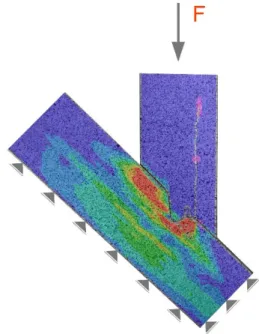ISBN: 978-91-88898-64-7
69
Industrialization of the design and production process of wooden trusses
B. Kromoser†*, M. Braun†
†Institute of Structural Engineering, benjamin.kromoser@boku.ac.at
Currently, laminated timber is widely used beside classic sawn timber [1]. The gluing allows for higher part length and involves an advantageous behavior regarding deformations due to shrinkage and lead to better, more regular mechanical properties [2]. The drawback is a low material utilization factor. Starting from a tree trunk, only 25-30 % are part of the final product. Thus, the high-quality product has to be used as efficient as possible.
At moment mostly, plate girders made of laminated timber are used as a result of the efficient manufacturing process. If in comparison a truss system is used, a similar load bearing capacity and stiffness can be achieved with much less material effort. The aim of the presented research concept is to industrialize the design and manufacturing process of timber truss systems to be able to compete with the common plate girder systems (see Figure 1). In detail the complete process starting from the design, static optimization, static proofs according to the standards, work preparation to production process will be cumulated in a continuous digital approach.
The stiffness of a truss system is directly linked to the stiffness of the truss joints. Thus, in a first step the load bearing behavior of different wood-wood connections was tested to determine the most efficient version for the approach. Besides traditional wood connections and engineer-type wood connections (gusset plate) we also tested completely new versions, which are enabled by digital fabrication tools. Beside recording the applied loads and chosen areas by linear variable displacement transformers (LDTV’s) the strains at the specimen surface were supervised by using a digital image correlation system (DIC). An exemplary result is shown in Figure 2. In a second step first prototypes of full-scale trusses with a span of 4.8m were manufactured by using an industrial robot and the load bearing behavior was tested in destructive bending tests.
Figure 1: Concept drawing Figure 2: Exemplary results of a compressive test at a
timber truss joint
References
[1] E. Möller, „Tendenzen im Holzbau“, Bautechnik, Bd. 90, Nr. 1, S. 42–46, Jan. 2013. [2] Holzabsatzfonds, „Holz als konstruktiver Baustoff“, Bd. 4, Nr. 1, S. 138, Dez. 2008.
